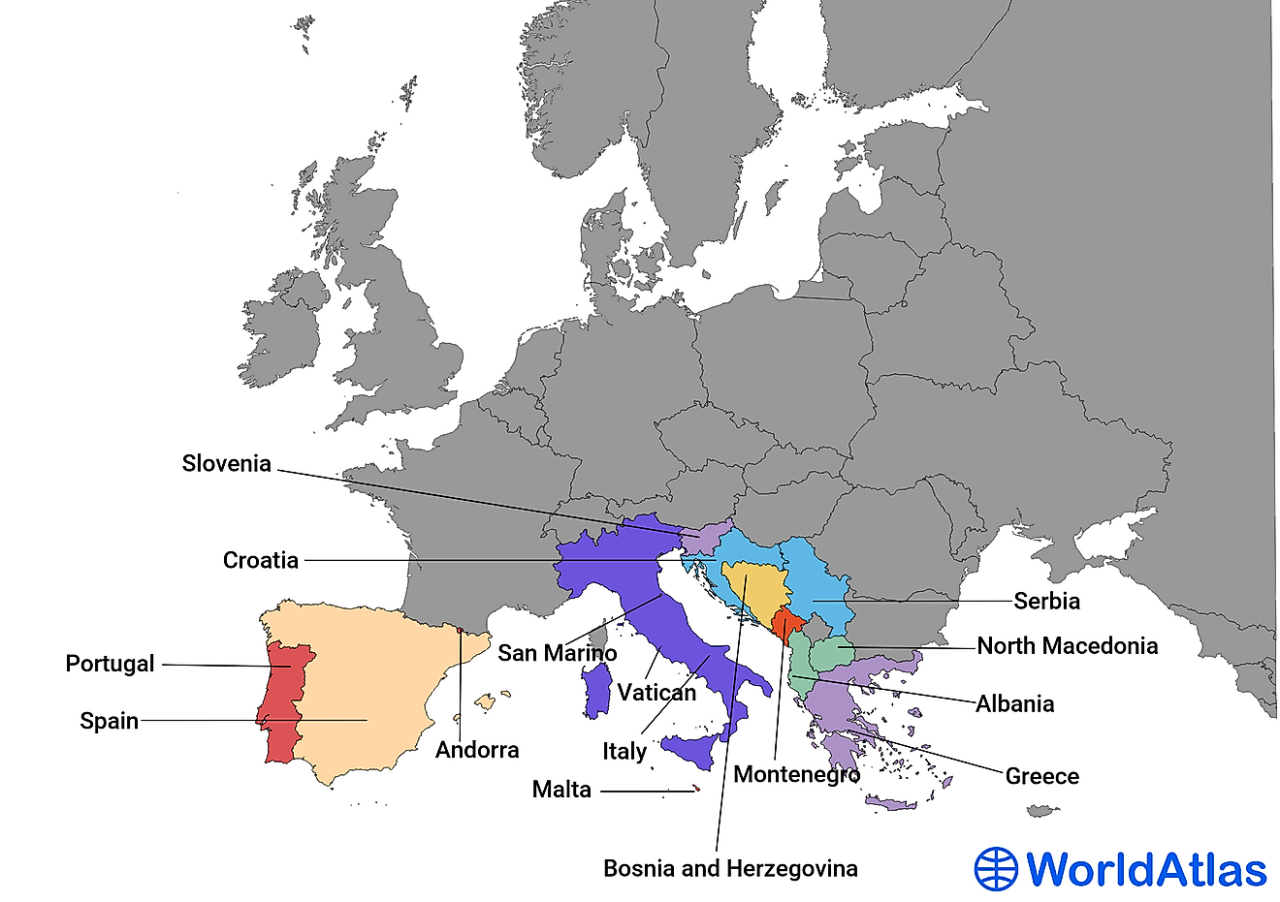
Why Southern Europeans Are So Long Lived
Why Southern Europeans Are So Long Lived? It’s a question that’s fascinated researchers for years, and the answer isn’t a simple one. It’s a captivating blend of genetics, lifestyle, diet, and societal factors that contribute to their remarkable longevity. This journey will uncover the secrets behind their exceptional lifespans, exploring everything from the sun-drenched landscapes and the vibrant Mediterranean diet to the strong family ties and social structures that support them.
We’ll delve into the specifics of their traditional diet, rich in olive oil, fresh produce, and seafood, and how this compares to other dietary patterns around the world. We’ll also explore the role of physical activity, deeply ingrained in their daily lives, and examine the impact of their healthcare systems and access to preventative care. Finally, we’ll consider the influence of genetics and the strong social support networks that are integral to Southern European culture.
Lifestyle Factors and Health Outcomes
The remarkable longevity observed in Southern Europe isn’t solely attributable to genetics; lifestyle plays a crucial, interwoven role. A confluence of factors, from ingrained physical activity to strong social bonds, contributes significantly to the health and lifespan of individuals in these regions. Understanding these lifestyle choices offers valuable insights into promoting healthier aging globally.
Physical activity is deeply ingrained in the daily routines of many Southern Europeans. It’s not necessarily structured exercise in gyms; instead, it’s often integrated seamlessly into everyday life. This active lifestyle, coupled with a largely Mediterranean diet, contributes substantially to their health outcomes.
Physical Activity and Regular Exercise
Southern European cultures traditionally prioritize physical activity, often without considering it “exercise.” Walking remains a primary mode of transportation in many villages and towns, leading to considerable daily movement. Even simple tasks, like carrying groceries or tending to gardens, contribute to a higher level of physical activity compared to more sedentary lifestyles in other parts of the world.
Furthermore, traditional occupations, often involving manual labor, contribute significantly to this pattern.
So, why do Southern Europeans live so long? Diet rich in olive oil and fresh produce is a big part, I think. It’s fascinating to contrast that with the lifestyles of the ultra-rich, like reading about colin huang chinas richest man , and how their access to resources might impact longevity – perhaps in different ways. Ultimately, though, it seems that a balanced, plant-focused diet, and strong social connections, are key to a long life in Southern Europe.
Social and Cultural Aspects Contributing to Physical Activity and Well-being, Why southern europeans are so long lived
The social fabric of Southern European communities fosters physical activity and well-being. Regular social gatherings, often involving meals shared outdoors, encourage movement and interaction. The emphasis on family and community creates a supportive environment where physical activity is not seen as an individual pursuit but a shared experience. These strong social connections are believed to reduce stress and promote mental health, further contributing to longevity.
Examples of Traditional Occupations and Leisure Activities Promoting Physical Health
Traditional occupations in Southern Europe often involved significant physical exertion. Farming, fishing, and construction were common, demanding physical stamina and leading to a naturally active lifestyle. Leisure activities also frequently incorporated physical movement. Walking to meet friends, playing games like bocce ball, and engaging in traditional dances all contributed to overall fitness levels. These activities are not just physical; they also promote social interaction and mental well-being.
Correlation Between Lifestyle Factors and Life Expectancy in Southern Europe
| Lifestyle Factor | Description | Impact on Life Expectancy | Examples |
|---|---|---|---|
| Diet | Predominantly plant-based, rich in fruits, vegetables, olive oil, and whole grains. | Positive; reduces risk of heart disease, certain cancers, and other chronic illnesses. | Mediterranean diet rich in legumes, fish, and seasonal produce. |
| Exercise | High levels of incidental physical activity integrated into daily life, supplemented by traditional leisure activities. | Positive; improves cardiovascular health, reduces obesity, and strengthens bones and muscles. | Walking, gardening, traditional dances, and games like bocce ball. |
| Social Interaction | Strong emphasis on family and community, frequent social gatherings, and close-knit social networks. | Positive; reduces stress, improves mental health, and provides social support. | Regular family meals, community festivals, and close relationships with neighbors. |
Genetic Predisposition and Longevity

The remarkable longevity observed in Southern European populations isn’t solely attributable to lifestyle factors. A significant component is likely rooted in their genetic makeup, a complex interplay of genes that influence disease resistance, metabolism, and overall aging processes. While lifestyle plays a crucial role, genetics provides the underlying framework upon which a long and healthy life is built. Understanding the genetic contributions to longevity in these populations offers valuable insights into the broader field of aging research and potentially informs strategies for promoting healthy aging worldwide.
Research suggests several potential genetic factors contributing to the increased lifespan observed in Southern European populations. These factors are often interconnected and don’t operate in isolation. For example, genes influencing inflammation, cholesterol metabolism, and the immune system can all interact to affect overall health and lifespan. Furthermore, the specific genetic variants associated with longevity may differ subtly across various Southern European subpopulations, reflecting the region’s rich genetic diversity.
So, why do Southern Europeans live so long? Diet and lifestyle are often cited, but I’ve been thinking lately about the broader impact of government decisions on health. Reading about the push for accountability regarding the COVID-19 vaccine mandates, like this article on a Maryland AG candidate’s stance: politicians behind covid 19 vaccine mandates should be brought to justice maryland ag candidate , makes me wonder how such policies might affect long-term health outcomes.
Ultimately, understanding longevity in Southern Europe requires a complex analysis that goes beyond just food and includes the impact of political decisions on public health.
Genetic Variations and Disease Resistance
Studies have identified specific genetic variations associated with increased resistance to age-related diseases like cardiovascular disease, type 2 diabetes, and certain cancers. For instance, certain alleles (alternative forms of a gene) of genes involved in cholesterol metabolism have been linked to lower rates of heart disease in some Mediterranean populations. Similarly, variations in genes related to inflammation may contribute to reduced risk of age-related inflammatory diseases.
These variations often interact with environmental factors, meaning that their effects on longevity are not solely determined by genetics but are also influenced by lifestyle choices and environmental exposures. This interaction underscores the complexity of studying the genetics of longevity.
Comparative Genetics and Longevity
Comparing the genetic makeup of Southern Europeans with other populations reveals intriguing differences potentially related to longevity. For example, some studies suggest that Southern Europeans possess a higher frequency of certain genetic variants associated with increased longevity compared to Northern European or other populations. However, it’s crucial to acknowledge that these comparisons are often complex, influenced by confounding factors like lifestyle, socioeconomic status, and access to healthcare.
So, why do Southern Europeans live so long? Diet and lifestyle are key, of course, but consider the broader picture. Political decisions, like those highlighted in this article about how Biden’s comments on coal plant closures, biden comment on shutting coal plants lost pennsylvania for democrats ex white house adviser , impact communities and their health, influencing factors like access to clean air and resources that contribute to longevity.
Ultimately, a holistic view encompassing both personal choices and wider societal factors explains the impressive lifespans seen in Southern Europe.
Further research, focusing on large-scale genomic studies comparing diverse populations, is needed to fully understand the extent to which genetic differences contribute to observed variations in lifespan.
Genetic Factors and Their Potential Roles in Longevity
It’s important to understand that longevity is a complex trait influenced by numerous genes, each with a small effect. No single gene determines lifespan. Instead, it’s the cumulative effect of many genes interacting with each other and with environmental factors that shapes an individual’s lifespan. The following list highlights some genetic factors and their potential roles, keeping in mind the complexity and ongoing research in this area.
- FOXO3 gene: Variations in this gene have been consistently associated with increased longevity across multiple populations, including some Southern European groups. Research suggests it plays a role in stress resistance and cellular repair mechanisms. ( Source: Willcox BJ et al. BMC Geriatrics, 2008.)
- APOE gene: This gene is involved in cholesterol metabolism. Certain variants are associated with a reduced risk of Alzheimer’s disease, a significant contributor to mortality in older populations. The frequency of protective variants might differ across populations. ( Source: Strittmatter WJ et al. Proc Natl Acad Sci U S A. 1993.)
- Genes involved in inflammation: Variations in genes regulating inflammatory responses may influence susceptibility to age-related inflammatory diseases, thereby impacting lifespan. Studies have shown associations between certain inflammatory gene variants and longevity in some Mediterranean populations. ( Source: Franceschi C et al. Nat Rev Immunol. 2000.)
Access to Healthcare and Longevity: Why Southern Europeans Are So Long Lived
Access to quality healthcare plays a significant role in the longevity observed in Southern Europe. While genetic predisposition and lifestyle choices undoubtedly contribute, the availability of preventative care, early disease detection, and effective treatment significantly impacts life expectancy. A robust healthcare system acts as a crucial safety net, mitigating the negative effects of various health risks and extending healthy lifespans.The impact of preventative healthcare measures and early disease detection on lifespan is substantial.
Regular check-ups, screenings for common diseases like cancer and cardiovascular conditions, and readily available vaccinations significantly reduce morbidity and mortality rates. Early intervention, facilitated by accessible healthcare, allows for timely treatment and management of chronic illnesses, improving quality of life and extending lifespan. This proactive approach contrasts with reactive models where individuals only seek medical attention during acute crises, often resulting in poorer outcomes.
Preventative Healthcare and Early Disease Detection in Southern Europe
Southern European countries, despite variations in their healthcare systems, generally prioritize preventative healthcare. National health programs often include widespread vaccination campaigns, regular screenings for various cancers (breast, cervical, colorectal), and initiatives promoting healthy lifestyles. The emphasis on early detection allows for less invasive and more effective treatments, contributing to improved survival rates and longer lifespans. For example, Italy’s national health service, the Servizio Sanitario Nazionale (SSN), provides comprehensive coverage, including preventative screenings, leading to early diagnosis and treatment of numerous diseases.
Comparative Analysis of Healthcare Systems
Comparing Southern European healthcare systems with those in other regions reveals some key differences influencing longevity. While many Northern European countries boast universal healthcare systems with high levels of funding and access, Southern European systems, while also generally universal, may face challenges related to funding, accessibility in remote areas, and wait times for certain specialized procedures. However, the strong emphasis on family and community support in Southern Europe may offset some of these challenges, providing a social safety net that complements the formal healthcare system.
In contrast, some North American systems, while offering advanced medical technology, may have higher out-of-pocket costs and disparities in access based on socioeconomic status, potentially impacting overall health outcomes and longevity.
Healthcare Systems in Selected Southern European Countries
| Country | Healthcare System | Key Features | Potential Influence on Life Expectancy |
|---|---|---|---|
| Italy | Universal, publicly funded (SSN) | Comprehensive coverage, strong emphasis on preventative care, regional variations in access | Positive: contributes to high life expectancy through early detection and treatment |
| Spain | Universal, publicly funded (SNS) | Good access to primary care, strong network of hospitals, potential for longer wait times for specialized procedures | Positive: contributes to high life expectancy, although wait times could impact certain conditions |
| Greece | Universal, publicly funded (ESY) | Facing challenges related to funding and efficiency, but generally provides basic healthcare | Mixed: while universal, funding constraints and efficiency issues could impact overall life expectancy |
| Portugal | Universal, publicly funded (SNS) | Relatively good access to healthcare, particularly in urban areas, but rural access can be limited | Positive: contributes to relatively high life expectancy, though rural disparities need addressing |
Social Support Networks and Longevity

The strong social fabric of many Southern European communities has long been recognized as a potential contributor to the region’s impressive longevity rates. While diet, genetics, and healthcare access play significant roles, the pervasive influence of robust social support networks shouldn’t be underestimated. These networks provide not only emotional comfort but also crucial practical assistance, contributing significantly to overall well-being and potentially extending lifespan.Strong social support networks and community ties are crucial for promoting longevity.
The emotional and practical support provided by family structures and social connections directly impacts physical and mental health, reducing stress and improving resilience to age-related challenges. This support can manifest in various ways, from assistance with daily tasks to emotional reassurance during difficult times. A sense of belonging and purpose, fostered by strong community ties, is also linked to better health outcomes and a longer life.
Family Structures and Social Support
Southern European cultures often emphasize strong family ties, with multiple generations frequently living in close proximity or maintaining frequent contact. This close-knit family structure provides a readily available support system. Grandparents often play active roles in childcare, providing relief for working parents and fostering intergenerational bonds. Adult children frequently assist aging parents with daily tasks, healthcare needs, and companionship, reducing the burden on formal care systems and promoting a sense of security and belonging in later life.
This contrasts with some other regions where nuclear family structures and geographical dispersion are more common, potentially leading to increased social isolation among older adults.
Social Support Systems: A Regional Comparison
Compared to some Northern European countries or North America, Southern European societies often demonstrate a higher degree of social cohesion and interconnectedness. While individualistic tendencies are growing in all regions, the emphasis on community and extended family relationships remains a strong cultural feature in many Southern European nations. This translates to a greater availability of informal support networks, supplementing formal healthcare and social services.
In contrast, societies with weaker community ties might rely more heavily on institutionalized care, which, while efficient, can sometimes lack the personalized and emotionally supportive element provided by close family and friends.
Social Isolation and Health Outcomes in Southern Europe
While strong social networks are prevalent, social isolation does exist within Southern European communities, and its negative impact on health and longevity is undeniable. Examples include elderly individuals living alone after the death of a spouse or those who have migrated away from their families and support systems. Studies have shown a correlation between social isolation and increased risks of cardiovascular disease, cognitive decline, and depression, all factors that can significantly shorten lifespan.
Even within strong family structures, individual circumstances can lead to social isolation, highlighting the importance of proactive measures to ensure that all members of the community, regardless of age or circumstance, feel connected and supported.
So, the secret to the long lives enjoyed by many Southern Europeans isn’t just one thing, but a beautiful tapestry woven from threads of diet, lifestyle, genetics, healthcare, environment, and strong social connections. It’s a testament to the power of a holistic approach to well-being, a reminder that living a long and healthy life is often about embracing a vibrant, connected, and balanced way of life.
It’s a compelling narrative, and hopefully, one that inspires us all to explore ways to improve our own health and longevity.

